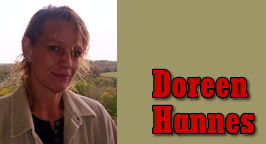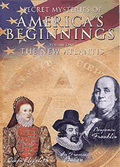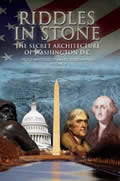Other
Hannes
Articles:
HOW TO BECOME A SERF IN ONE EASY STEP
By
Doreen Hannes
April 22, 2007
NewsWithViews.com
All you have to do is register your property with the USDA under the National Animal Identification System. You'll be assigned a seven-character number that stays with the property forever and the USDA "owns" that number according to " A User Guide" which is their latest public document on the program.
The premise id number or PIN will set you solidly in the position of giving up your rights to ownership. How can I say that? Well, words have meaning for a reason. The USDA, in their original documents regarding NAIS, refers to participants as "stakeholders" repeatedly, twenty one times in the Draft Strategic Plan alone. They also use the term "national herd" and tell us that NAIS is necessary to protect the health and marketability of the "national herd". First let's look at the PIN and then at animal identification with official NAIS compliant tags.
The USDA claims to "own" the PIN (page6 A User Guide) and when one is assigned a PIN either through truly volunteering for it or being rolled into it via other disease control programs, it stays with the property forever (Draft Program Standards pg 16-read the whole section on PIN) and the person who owns the property becomes a stakeholder. The definition of stakeholder is as follows:
"The term stakeholder, as traditionally used in the English language in law and notably gambling, is a third party who temporarily holds money or property while its owner is still being determined."
Yep. While it's owner is still being determined. It doesn't make me feel all warm and fuzzy. Now let's look at the definition of ownership as a comparison. Wikipedia defines the term as follows:
"Ownership is the state or fact of exclusive possession or control of property, which may be an object, land/real estate, intellectual property or some other kind of property. It is embodied in an ownership right also referred to as title."
So, if you have exclusive possession or control of the property in question, how can you be a stakeholder? Well, you can't be. Either it's your property, or it's someone else's property. With the NAIS, it's not your property once you have a PIN making you a stakeholder and putting you under the jurisdiction of the Area Veterinarian In Charge or AVIC. ("A User Guide" is loaded with 'consult your AVIC' with any questions about anything.)
This brings about some very serious questions regarding not only livestock but also real estate. Since the USDA "owns" the Premise Identification Number (page 6 "A User Guide") and the number can only be 'inactivated' and not expunged or completely annihilated, does it create an encumbrance on property with the PIN? Should that be part of the disclosure on the property? What happens if someone who doesn't want to be in NAIS in any way buys property with a PIN? (You know, since it's "voluntary".) Are they automatically put into the position of stakeholder under the authority of the AVIC? Will the USDA expunge that PIN upon request? According to USDA documents, even though the program is 'voluntary at the Federal level", the PIN stays permanently with the property, not with the person who applied for the PIN. What about the person whose property was assigned a PIN via the roll in procedures that have been employed to increase premise registration numbers using other programs like scrapie and brand registration or participation in the QSA program for cattle? What are the answers to these questions? It sure looks like they will need to be determined in court, as the USDA has no answers available in any of their documents.
Then of course we want to know who owns the "national herd" anyway? It can't be the stakeholder who has been assigned a premise identification number, because the stakeholder is waiting for the rightful owner to be determined, and it can't be the county or the state if this is indeed the National Animal Identification System. When NAIS is in full implementation, all covered animals, 29 species from clams to cattle, will be required to have official identification. Official identification consists of a NAIS compliant number issued with the country code at the beginning. The country code for the United States is 840. It may or may not surprise you to learn that the 840 code covers all financial instruments, like stocks, checks, and bearable securities otherwise known as dollar bills. You can find this beautiful tidbit by searching for ISO-4217. This International Organization of Standards code covers only financial instruments. When I first looked into the 840 country code there was no designation for 840 under the claimed code of ISO-3166 which is a manufacturing standard. There were only two and three character alpha codes, like US and USA, in ISO-3166. The only assignations 6 months ago for "840" were in the ISO-4217 standard which covers financial instruments and a UN assigned country code.
Regulations are already in place making it unlawful to remove or tamper with an official identification device. (User guide page 39) This regulation will lead to fully implemented three component NAIS in the not too distant future. Here's the thing, if you cannot remove an NAIS tag from an animal and the person who sold the animal is a participant in NAIS then the sale of the animal will need to be reported as a high risk activity, and the premise id of the person buying the officially identified animal will have to be recorded, or assigned whichever the case may be, the premise id is not to be expunged only inactivated if animals are no longer held on the property. No rules have been promulgated regarding whether or not official devices must be disclosed as being affixed to the animal at a sale barn, so one could actually purchase an animal with no foreknowledge of it's status as an NAIS compliant animal. However there are plenty of references to participation in the NAIS being built upon the PIN as the foundation of the system. You can't have an NAIS id device on an animal without having a PIN, you can't record 'events' regarding an animal in the NAIS information repositories without having an NAIS identification device on the animal. It's one, two, three, with the foundation of the entire system being premise identification and changing the status of the property holder from owner to stakeholder.
To further substantiate my claims, please look into the case of Mr. Dobbins in the United Kingdom. Some of his numbers on his registered show herd of dairy cattle were not jibing with their passports, so Defra (Department for Environment Food and Rural Affairs, the UK's USDA) took all of his cattle passports and confiscated his entire herd giving him 48 hours to positively identify all 576 of his cattle before they destroyed them. He couldn't identify them because Defra had confiscated all of his documents. It's like show me the title to the car, while I have taken the title and hidden it in my house thirty miles away. As an added slap in the face, no indemnity is necessary under EC regulations when animals are not identified in exact compliance with their regulations. The man's entire livelihood was destroyed because not every piece of paper was in the prescribed order.
The USDA doesn't seem to think we can add these things together well enough to see why we have no choice but to resist this scheme with everything we have because they truly believe we are not competent enough to see the correlations between other nation's experiences with these systems and then extrapolate the consequences for ourselves. In the USDA's NAIS How-To-Handbook for their partners in the crime of NAIS implementation, they advise that all messages for potential NAIS stakeholders be designed for a sixth grade reading level. They also give the 'major themes' of those of us opposing the program and state that our arguments all 'fall into a few buckets'. They never do address any of the arguments, and they fail to acknowledge two of the largest arguments of religious objections and Constitutional issues. The Handbook is quite a piece of work and illustrates how "open and transparent" the USDA really is about their desires for the program�.After all, they are so open that we had to get a user name with a password to even see the documents they've spent taxpayer money developing to sell this program to people without full disclosure and with no actual cost analysis.
|
Subscribe to the NewsWithViews Daily News Alerts! |
It seems to me that those at the top of the NAIS food chain think that since we trade real labor for fake money to pay fraudulent taxes on stuff we don't own we wouldn't notice just one more affront. It's time to shake off your righteous indignation and ask these officials if they'd like some Boston Tea. ***
Please check out these links:
1,
Christopher Booker's notebook, Papers
were not in order, so they had to die
2, Visit: www.nonais.org
and scroll down the right hand side for USDA documents on NAIS. At
the very least you need to read the 2005 Draft Strategic Plan, then
The Implementation Plan and the User Guide.
� 2007 Doreen Hannes - All Rights Reserved
Doreen Hannes is a homesteading mom, and a truly grass roots activist for small scale and traditional farming rights. She has thoroughly researched the origins and impacts of "Free Trade" agreements and National Animal Identification System in particular and has been a major force in the anti-NAIS movement both nationally and in Missouri for over a year.
Her mission is to expose the procedures and methods being employed to destroy the God given rights of this once great republic. Doreen is a frequent guest on talk radio programs and has written extensively on the NAIS.
E-Mail: animalwaitress@yahoo.com
So, if you have exclusive possession or control of the property in question, how can you be a stakeholder? Well, you can't be. Either it's your property, or it's someone else's property. With the NAIS, it's not your property once you have a PIN










